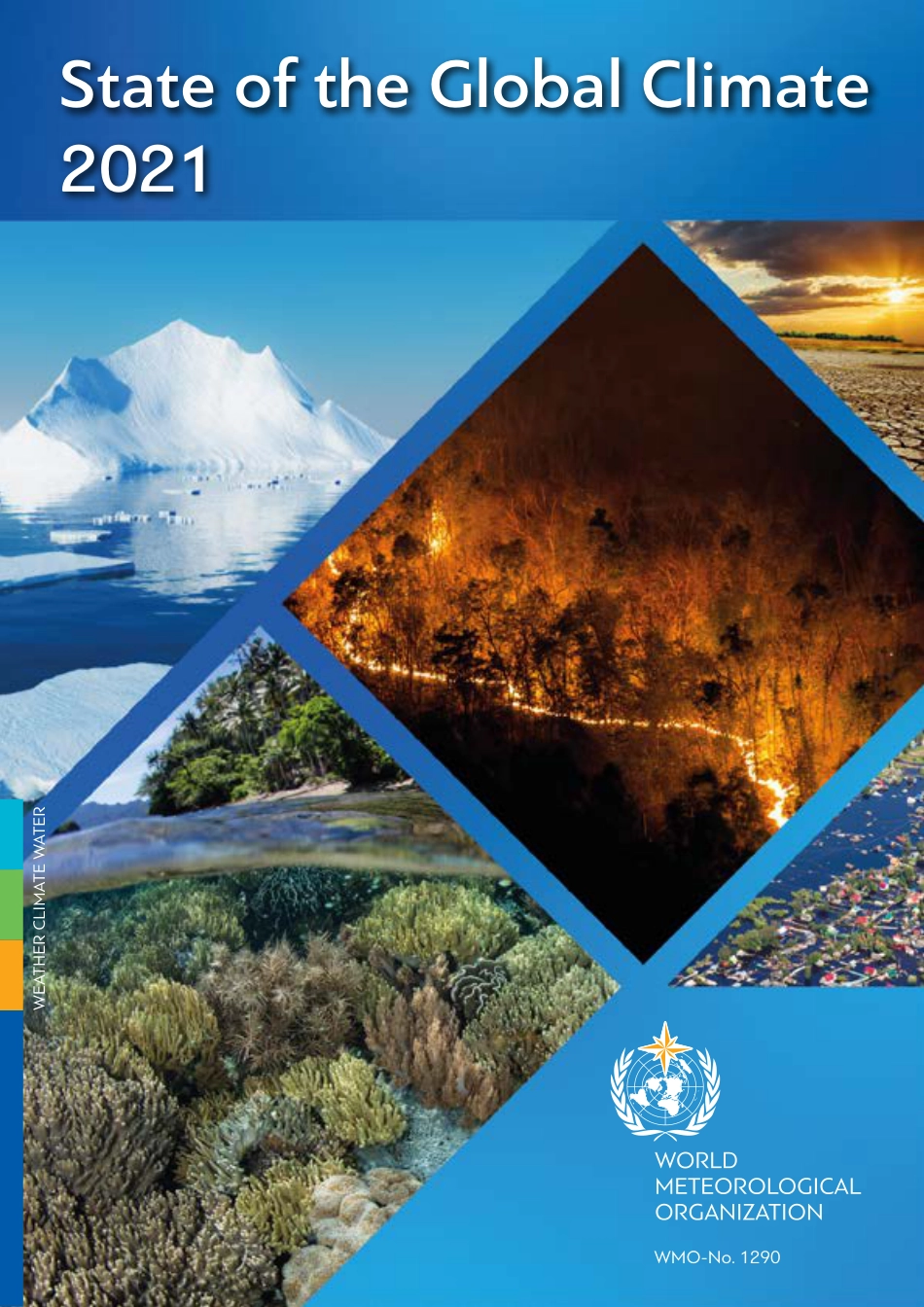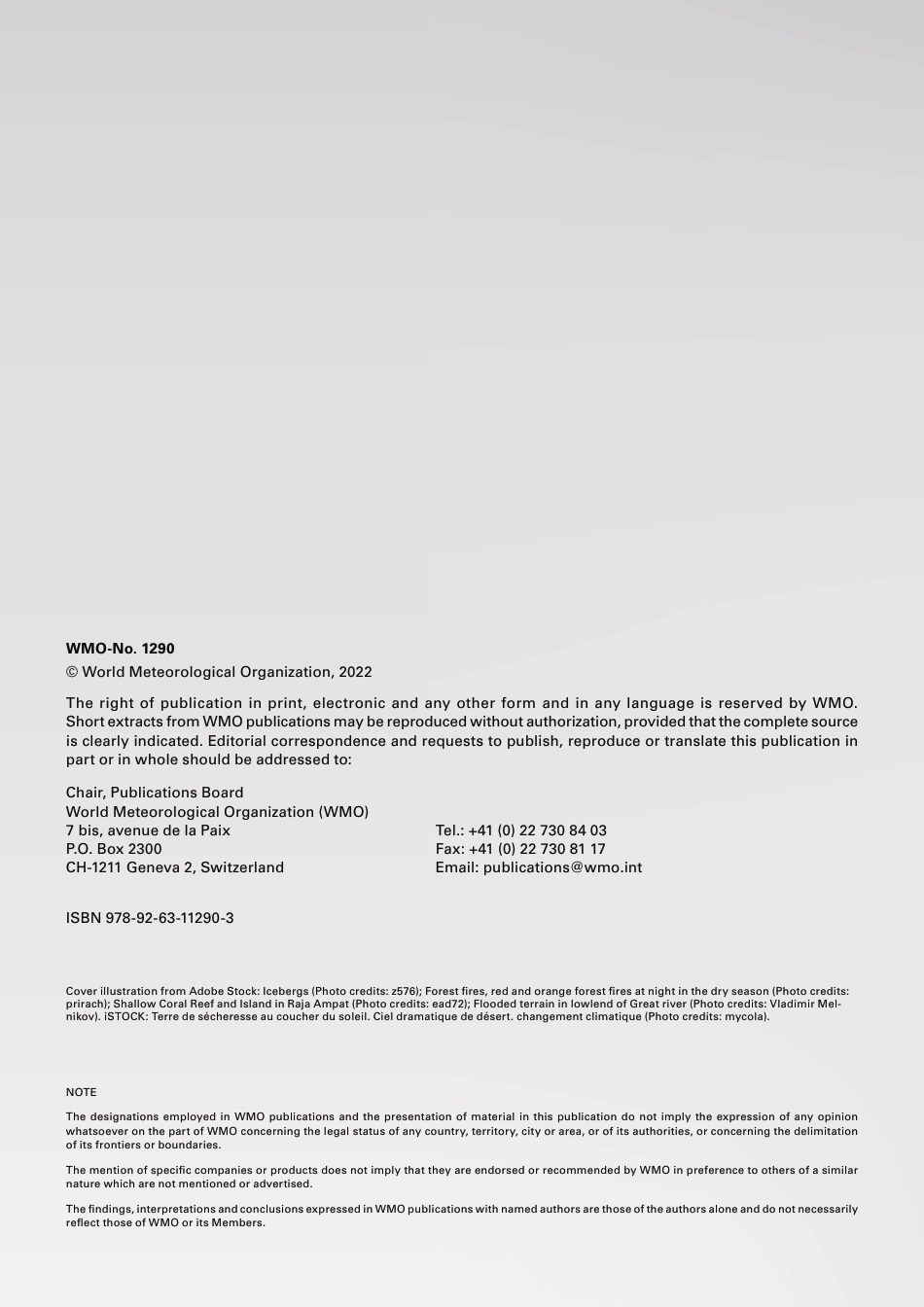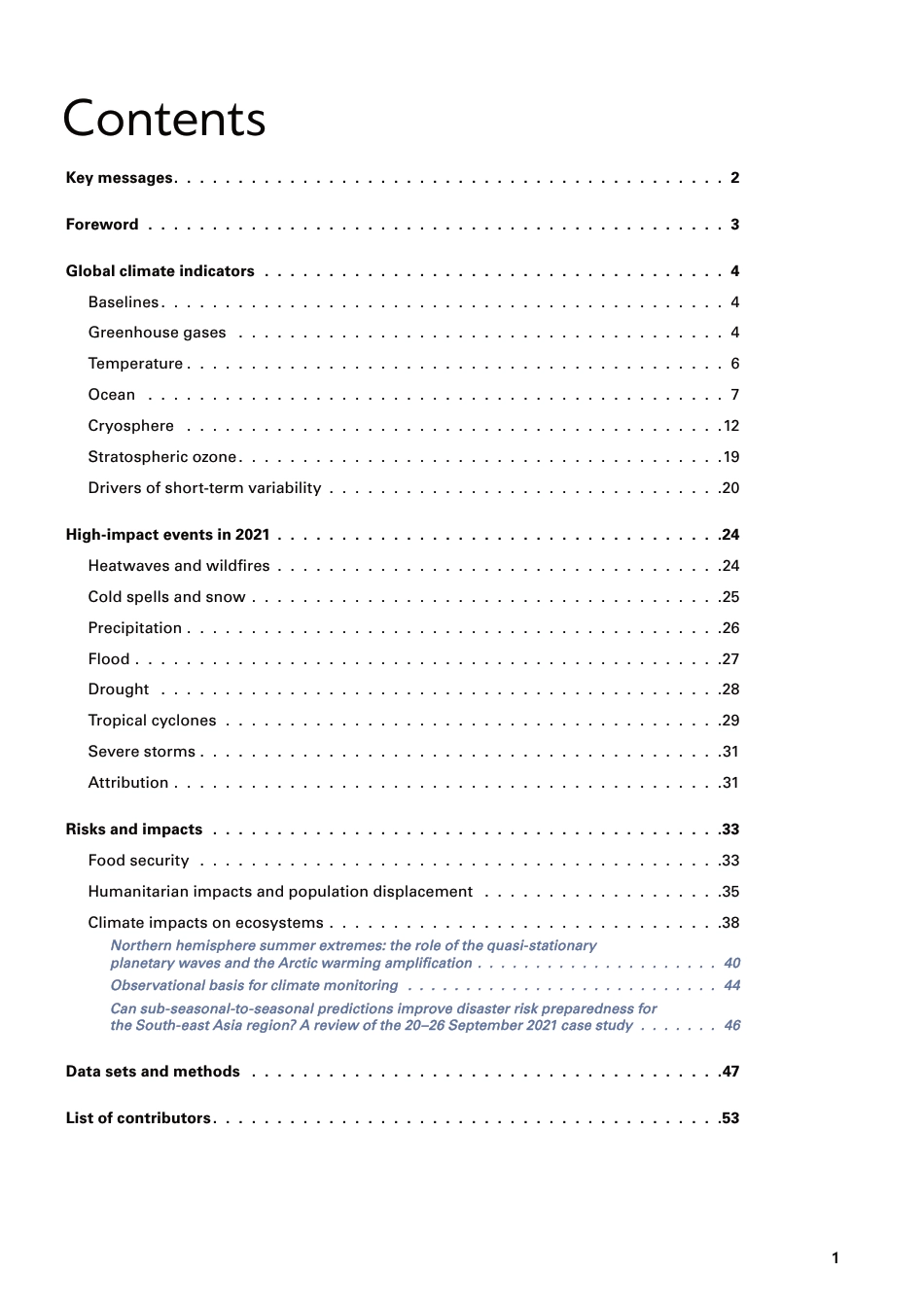State of the Global Climate 2021WMO-No. 1290WEATHER CLIMATE WATERBWMO-No. 1290© World Meteorological Organization, 2022The right of publication in print, electronic and any other form and in any language is reserved by WMO. Short extracts from WMO publications may be reproduced without authorization, provided that the complete source is clearly indicated. Editorial correspondence and requests to publish, reproduce or translate this publication in part or in whole should be addressed to:Chair, Publications BoardWorld Meteorological Organization (WMO)7 bis, avenue de la Paix Tel.: +41 (0) 22 730 84 03P.O. Box 2300 Fax: +41 (0) 22 730 81 17CH-1211 Geneva 2, Switzerland Email: publications@wmo.intISBN 978-92-63-11290-3Cover illustration from Adobe Stock: Icebergs (Photo credits: z576); Forest fires, red and orange forest fires at night in the dry season (Photo credits: prirach); Shallow Coral Reef and Island in Raja Ampat (Photo credits: ead72); Flooded terrain in lowlend of Great river (Photo credits: Vladimir Mel-nikov). iSTOCK: Terre de sécheresse au coucher du soleil. Ciel dramatique de désert. changement climatique (Photo credits: mycola).NOTEThe designations employed in WMO publications and the presentation of material in this publication do not imply the expression of any opinion whatsoever on the part of WMO concerning the legal status of any country, territory, city or area, or of its authorities, or concerning the delimitation of its frontiers or boundaries.The mention of specific companies or products does not imply that they are endorsed or recommended by WMO in preference to others of a similar nature which are not mentioned or advertised.The findings, interpretations and conclusions expressed in WMO p...



